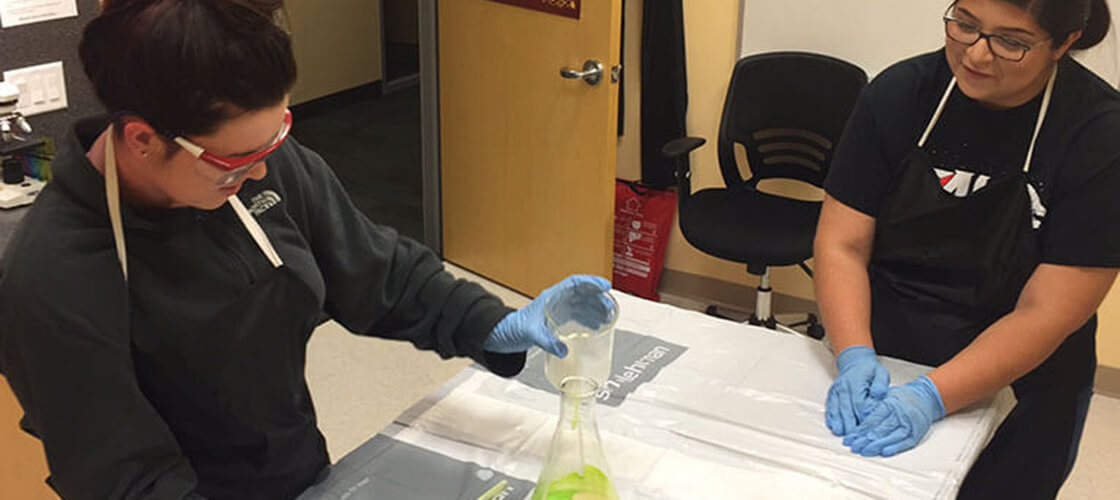In the spirit of the spooky October holiday, we thought we’d reach out to our mad scientists across Fusion-land and see some of the cool things happening in their classrooms. When learning happens in a one-to-one classroom, there are some pretty rad experiments that happen in our science labs. Here’s a small sampling of what’s going on in science labs across the country:
Monstrously Magnetic
Fusion Southlake – Southlake, TX: A student and her teacher Lindsey created a ferrofluid (a fluid containing a magnetic suspension) in their study of magnetism and magnetic fields:


Elephant Toothpaste
Meanwhile, in the chemistry lab, Southlake’s Chemistry teacher, Mayerlin, and her student, Karson, were creating “Elephant Toothpaste.” This demonstrates the actions of catalysts and the effects of an exothermic reaction.


Beats Influencing Beats
Fusion South Bay – Hermosa Beach, CA: In a biology class, a student wanted to learn more about how music affects heart rate so she developed an experimental procedure using the Vernier heart-rate equipment to experiment on her fellow students. (Vernier is a tool we use in our science labs to conduct and measure experiments.)
In addition to the heart-rate data, she also collected qualitative data by asking her subjects how they felt at different points during each song, writing down their reactions, etc.
Her conclusion was that music does affect heart rate, but that there’s a lot of variation in how a given song will cause someone to react.
Self-Growing Marigolds
Fusion Mission Viejo – Mission Viejo, CA: For a 7th-grade life science class, the student created a self-watering ecosystem to grow marigolds. The oxygenating plants and warmth from the sun created some condensation keeping the water levels similar from day to day. The consistent water levels gave constant moisture to the soil to nourish the seeds. Marigolds sprouted in a week and grew to three inches by the final day of observations:

Bloody Science
Fusion Englewood – Englewood, NJ: For one of our more unique classes, Forensic Science, students explore the roles and responsibilities of scientist and investigators in a variety of forensic fields. In unit three of this class, they cover the topic of blood splatter, and students gain an understanding of what crime scene investigators look at when entering a crime scene in terms of blood splatter patterns. Different patterns will give clues to what kind of crime was committed. I’ll spare you the gory details…but I will share a photo. Note: no one was harmed in the making of this experiment. Only water with red paint was used:

We hope you’ve enjoyed a glimpse into the world of science at Fusion! Connect with your campus to learn what they’re doing!








